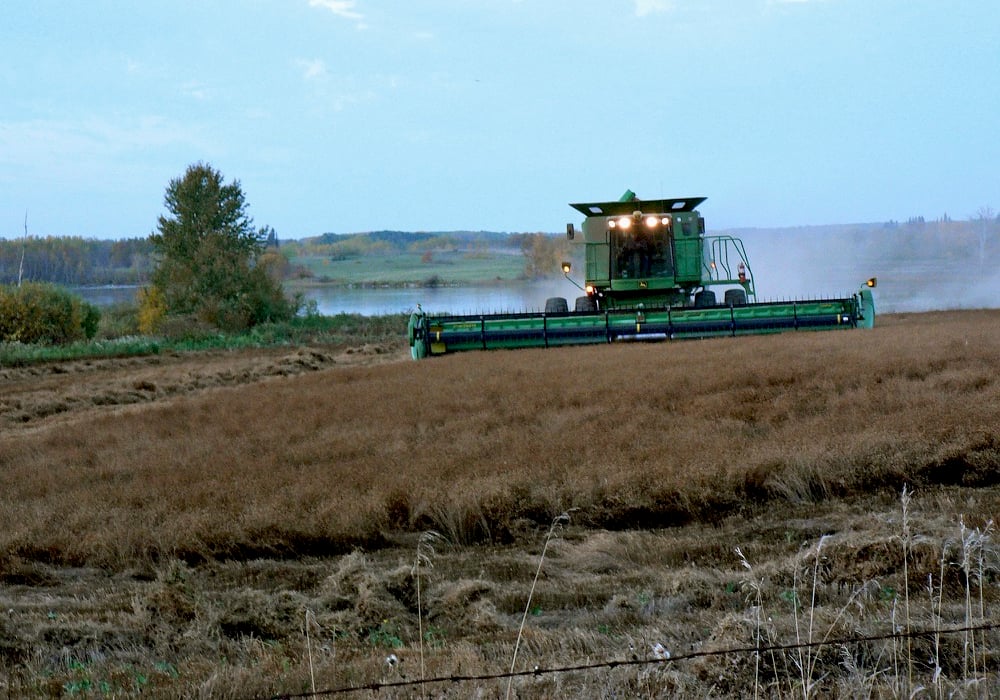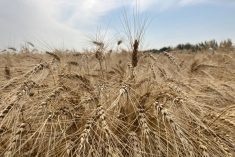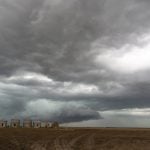CNS Canada –– A tentative ceasefire in eastern Ukraine could lead to adjustments in the global grain markets, with softening wheat prices a possibility.
Conflict in eastern Ukraine has been an underlying factor in grains and oilseeds markets over the past year, with the uncertainty of the situation providing both bearish and bullish incentives for the agricultural markets depending on the news of the day.
The latest development has seen Russia and Ukraine, together with Germany and France, hash out a ceasefire agreement in Belarus. The ceasefire, slated to take effect Sunday, includes a number of other measures to help bring peace to the troubled region where thousands of people have died since the conflict began.
Read Also

Most of Manitoba harvest wraps up for 2025
Manitoba Agriculture issued its final crop report of 2025, showing the overall provincewide harvest at 97 per cent complete as of Oct. 20. Nearly all major crops have finished combining, with 37 per cent of Manitoba’s sunflowers finished, plus 71 per cent of grain corn and small amounts of soybeans and potatoes left to do.
“A ceasefire in Ukraine will probably be good economically for both Russia and Ukraine, which might allow them to start selling wheat (in the international market) once again,” said analyst Jack Scoville of Price Futures Group in Chicago.
If the ceasefire holds and restrictions are lifted, there could be more wheat moving out of Russia and Ukraine, which would put some pressure on North American grain markets, said Scoville.
On the other side, Russia is also an importer of soybeans, so there could be an increase in demand there.
He said Ukraine was already “pushing corn out the door,” which should continue.
However, “we’ve had ceasefires before,” said Scoville, adding that the total impact from the grains and oilseeds was “hard to tell right away.”
A return to “normal” trade and production patterns will also not happen overnight.
“Ukrainian and Russian farmers are still in the same situation they were in before, with their devalued currency,” said Terry Reilly of Futures International in Chicago. “It will take a while for things to recover economically and for the producers’ situation to get back to pre-2014 levels.”
While exports may be able to move more freely from the region, Reilly said the likelihood of a large acreage reduction in spring seeded crops “should keep a lid on exports in 2015-16.”
Large grain supplies outside of both North America and the Black Sea region “are sufficient enough to meet any shortfall in exports.”
— Phil Franz-Warkentin writes for Commodity News Service Canada, a Winnipeg company specializing in grain and commodity market reporting.
















